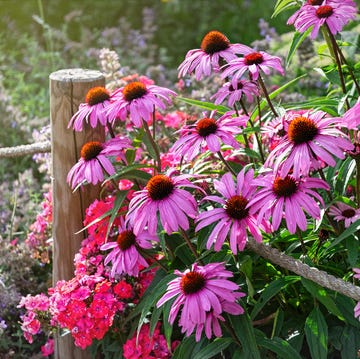Gardeners, it's almost time to get growing! While some areas of the country are already be clear of frost, historically, it's best to wait until after early April to start planting. But many of you are probably itching to grab your gloves and shovels. If that's the case, you'll need to devise a plan for how to protect your plants from a late spring frost.
While you can always use old sheets and rags to protect plants during cold snaps, they can be cumbersome and often don't provide enough protection. Enter: the garden cloche! This year, you'll want to reach for this handy garden tool that will help keep early plants safe from weather while getting them off to a good start.
What Is a Cloche?
From the French word for "bell," the original cloches were glass bell-shaped domes. The bell-shaped design reflects and distributes light and allows heat to surround plants for long periods, thus maximizing ideal growing conditions. The garden cloche also holds in moisture, reducing the need for frequent watering.
While you can find new glass ones (vintage ones are quite expensive), plastic examples are much more common and honestly easier to use. There are also open-wire cloches, aka critter cages, but those are meant to keep nibblers from harming plants and do nothing to protect against weather.
What Does a Garden Cloche Do?
Cloches act as mini greenhouses, providing a warm, damp environment for seedlings and small plants to grow, while also providing protection against light frosts, strong winds, and heavy rains. When used in the fall months, they can extend the growing season and enhance the ripening of late-season fruit.
How to Use a Cloche
There are a few ways cloches are helpful in the garden. Not only do they protect plants from adverse weather conditions, they can also help warm up the soil so planting can happen earlier. If you keep a cloche over a spot for two to three weeks in late winter, it will help warm up the soil enough so you can plant come early spring. Once the seeds are scattered or your seedling is in the ground, keep the cloche over the plant to help it get a leg up. Cloches can also help seedlings transition from the greenhouse or indoor seedling starter to outside.
Things to Keep in Mind
While cloches help protect plants from cold, it is also important to prevent the plant from overheating. Plastic cloches come with vent holes at the top to help regulate moisture and temperature. But if you are using a glass cloche, you will need to vent it on sunny days by placing it on risers. These risers can be two small pieces of wood, a few flat rocks, or even a couple of thick sticks.
More than likely, you will only want to use a cloche in the spring and fall. When cloches are used in the heat of summer, they can hold in too much light and heat, which can scorch or kill the enclosed plant.
You will also need to keep an eye out for slugs, which love the warm, damp environment that cloches create. And at the end of each season, wash your cloches with warm, soapy water to help prevent disease spread.
Other Options
There are a few other options, such as snap-together plastic row covers. These act like cloches but can cover a few rows of plants versus a single plant. There are also mini greenhouses, some of which are big enough to cover a small raised bed.
Charlyne Mattox is the Food and Crafts director with over 20 years recipe development, recipe editing, and crafting experience. Prior to starting at Country Living in 2014, she worked in the crafts department at Martha Stewart Living and Martha Stewart Kids before attending cooking school at the Institute of Culinary Education in New York City. She was nominated for a James Beard media award while a senior editor at Real Simple magazine and authored a cookbook Cooking with Seeds.
When not in the kitchen she loves to garden, focusing on growing flowers and kitchen herbs (of course), watering her 25 house plants, and knitting scarfs or hats she will never be able to wear in the always hot and steamy Alabama.















